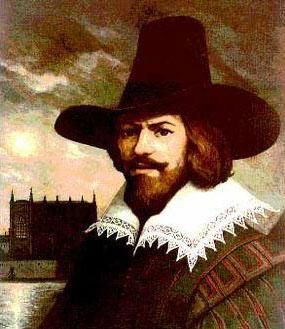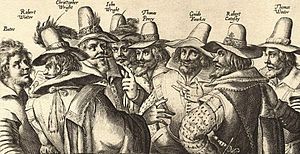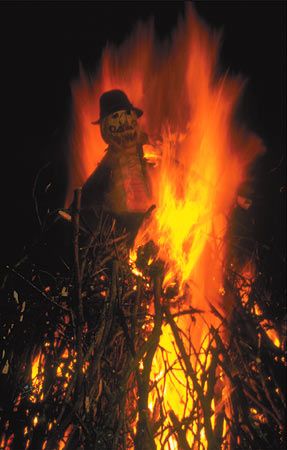First off, Guy Fawkes was born in York, in Northern England. The only reason I'm saying this is because I've seen where he was born.
His home was turned into the Guy Fawkes Inn, so you can actually stay there if you want on your trip to York. It's right next to York Minster, really hard to miss.
Anyway, you may be asking yourself who the heck is Guy Fawkes and what in the world is the Gunpowder Plot? Well, I'm going to give you the Reader's Digest version, no big, long history lesson planned for today.
So that's Guy Fawkes. Fawkes was a "born again" Catholic. After his father's death, his mother married a Catholic, and Fawkes became a Catholic himself. He even went to the European continent to fight for Spain (a Catholic nation) against the Protestant Dutch reformers. He also traveled around Europe trying to gain support for a Catholic rebellion in England (yet again, I'm going to mention Henry VIII briefly, he broke away from the Catholic Church and made his own Church of England). While on this expedition across Europe, Fawkes met a gentleman by the name of Thomas Wintour, and that set into motion what would become known as the Gunpowder Plot.
Wintour introduced Fawkes to Robert Catesby. Catesby had plans of his own, which included assassinating King James I.
James I, the monarch who followed Queen Elizabeth I, is known for his famous mother (Mary, Queen of Scots) and having published the King James Bible. Most important, at least for this story, James was a Protestant. The plot goes as followed: on November 5, 1605, Catesby and Fawkes, along with others, would blow up the House of Lords.
They picked November 5th because it was the State Opening of England's Parliament, so everyone would be there, including James I. This would set off a revolt in the Midlands. After this revolt, James' daughter, Princess Elizabeth, would be installed on the throne as a Catholic monarch.
Fawkes, along with his conspirators worked hard on making sure everything would go as planned. The conspirators are pictured above. This is actually an image from the Charing Cross tube stop (where Trafalgar Square, the National Gallery and National Portrait Gallery are, along with Buckingham Palace). Anyway, things did not go as planned. Since Fawkes had ten years of military experience fighting for Spain, he was put in charge of the explosives. Someone turned in an anonymous letter that was sent to William Parker, 4th Baron Monteagle on October 26, 1605. Around midnight on October 4th, the House of Lords was searched, and Fawkes was discovered with 36 barrels of gunpowder, more than enough to reduce the House of Lords to nothing. Some of the conspirators fled and attempted an uprising anyway, but they were unsuccessful. Those who survived, Fawkes included, were put on trial on January 27, 1606.
This was after Fawkes was tortured in the Tower of London. The room he was tortured in is pictured above where the three white windows are. While being tortured, Fawkes initially stayed strong, something even James I admired in him. After being tortured for two days, however, Fawkes said that there were five other co-conspirators. The next day, November 8th, he gave up their names.
After signing his confession, Fawkes and the others were put on trial. Not surprisingly, they were all found guilty and sentenced to death. On January 31, 1606, Fawkes and three others involved in the plot were dragged from the Tower of London to the Old Palace Yard at Westminster, across from the very building they tried to destroy.
This was a distance of roughly 2.7 miles, give or take. Fawkes was the last to be executed. The others were hanged, cut down while still alive and quartered. Fawkes was not going to go down without a fight. Once the noose was around his neck, he jumped from the scaffold, breaking his neck and saving himself from a prolonged and agonizing death.
On November 5, 1605, Londoners were encouraged to celebrate James I's escape from assassination by lighting bonfires. Parliament even released an act making this celebration mandatory, which stayed in place until 1859. In 1650, fireworks were added to the joyous celebrating, and in 1673, it was changed to burning effigies.
Perhaps Guy Fawkes and failed Gunpowder Plot have been made most famous in the graphic novel and subsequent movie V for Vendetta. I'm not going to go into a whole summary of that as well, but this scene has made the phrase "Remember, remember the fifth of November" popular in pop culture today.
So, that is Guy Fawkes and the Gunpowder Plot, and your brief history lesson for the day. I'm disappointed that I'm not in England celebrating, because that would have been a lot of fun. Oh well, there's still plenty of time for that adventure.








No comments:
Post a Comment